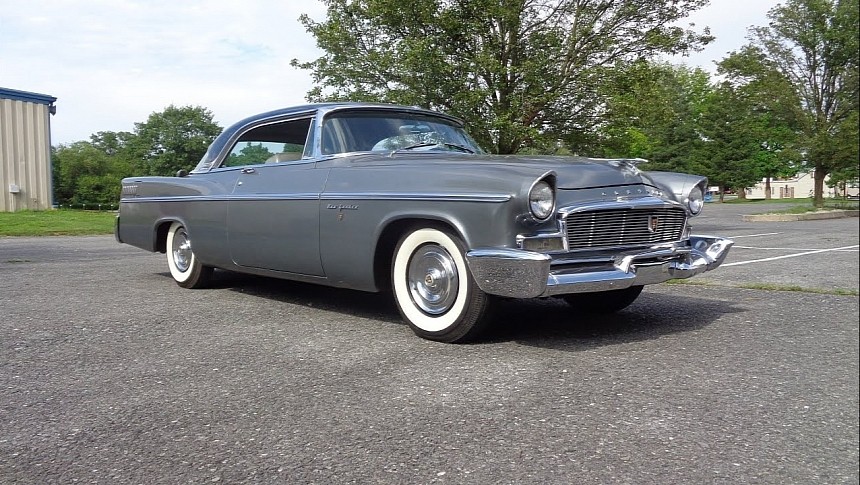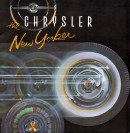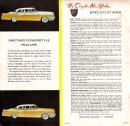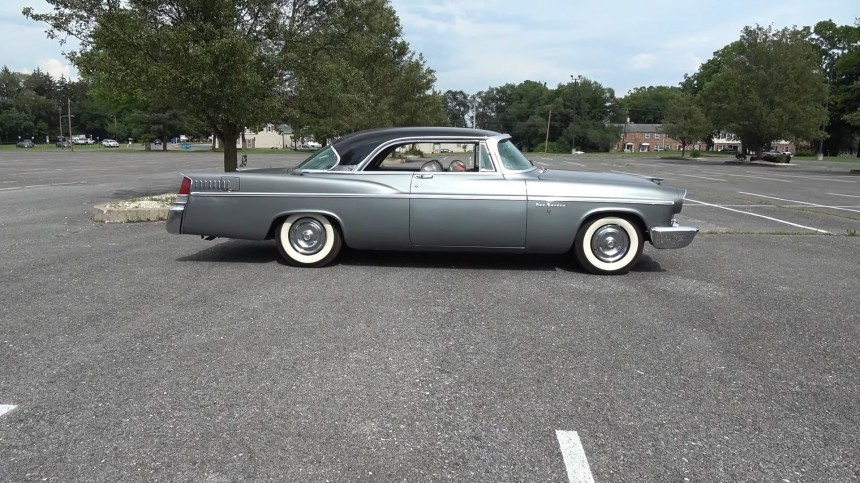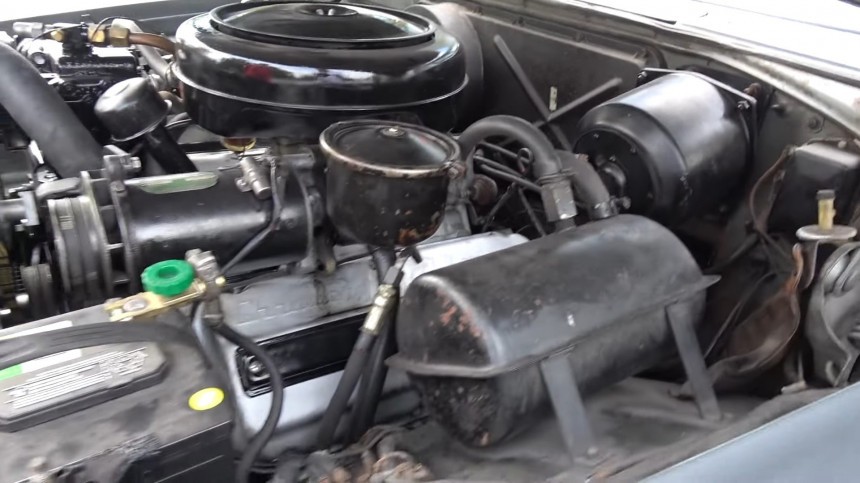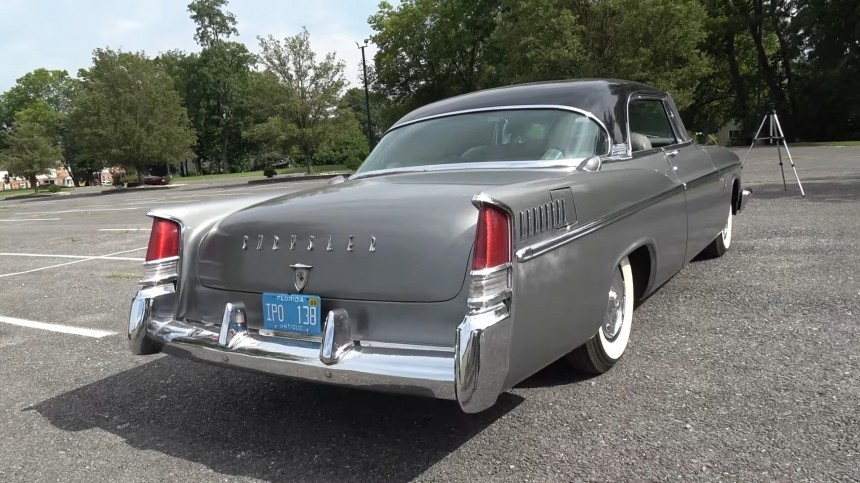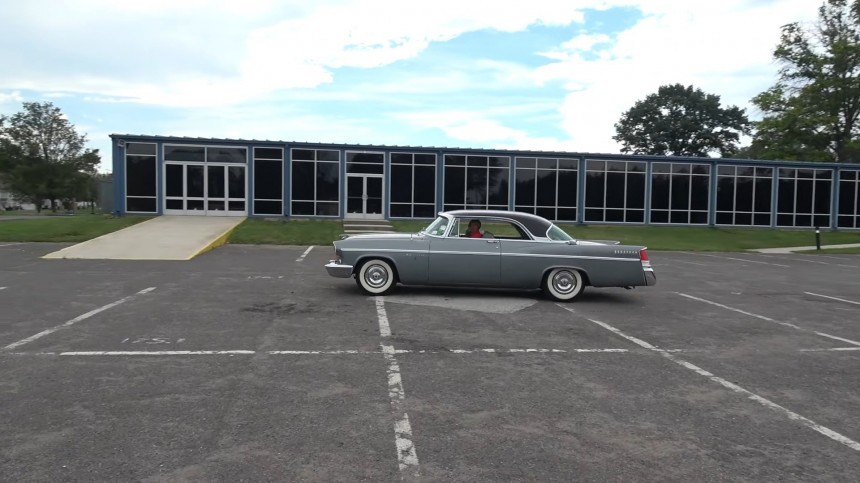If you were to name the single most famous engine in the history of Detroit, what displacement would that hemispherical-heads V8 be? The 426 of the 60s and the first half of the 70s is somewhat of a hemigod for several horsepower and torque reasons, but other HEMIs preceded the symbolic powerplant.
The 354 FirePower would be one of those forefathers – and it is so undeservingly forgotten among Mother Mopar's most beloved children. There is a possible explanation: the 5.8-liter V8 only shone brightly for a single year, in 1956.
The year was a turning point in American piston history – Ike Eisenhower urged the nation to build interstate highways, spurring a boom for the automotive industry in the following decades. Several other premieres were going on on the west side of the Atlantic: Elvis hit his first one million-album song, Hollywood rolled out the most expensive movie to date ('The Ten Commandments'), and Chrysler introduced the push-button automatic transmission.
The carmaker also switched from six-volt to twelve-volt to meet ever-growing automatization in its fine automobiles. At that moment, Chrysler was bragging – for good reason – about its quality of craftmanship and engineering. And there is one New Yorker Newport to testify for this.
Featured in yet another one of Lou Costabile’s glorious finds, this two-door six-passenger hardtop is a survivor – or so the owner claims – with 57,436 miles on the clock (shy of 91,000 kilometers). It also features the single-year 354 hemi V8, the aforementioned push-button two-speed PowerFlite gearbox, and an air conditioning unit in the trunk.
No, the climate-control system is not defective, and the owner didn’t put it in the cargo bay to take it to a repair shop. That was Chrysler’s standard of engineering – the Novi air conditioning sat neatly in the back. Two large scoops protrude from behind the ‘Clearbac’ wrap-around rear window to send fresh air to it.
Incidentally, 1956 was the last year for this cockpit-comfort architecture. From 1957 onward, the colling assembly would find a place under the hood. But that would have been pretty hard to achieve for the 1956 models – the engine bay is crammed enough, given the numerous ancillaries the FirePower V8 had to operate.
Power steering (Full-Time, as Chrysler advertised) and power brakes are commonplace today, but back in 1956, that was the stuff kings would be treated with. Add the power windows and power seats, as well as the Highway Hi-Fi 16 2/3 record player and the AM Town and Country radio (with nuclear-attack CONELRAD-frequency indicators), and this survivor is a majestically luxurious Chrysler.
Play the video at the 11:30 timestamp to see how the rear windows go up – if that’s not the manual definition of cool, then nothing is. We tend to think today’s cars are cool because we talk to them, and they obey remotely placed commands or can park themselves.
The reality is on the classics’ side. After all, Volkswagen made an all-electric GTI Concept that mimics the driving behavior of the brand’s most illustrious combustion GTIs. The same is valid for nearly all cars of yesteryear – they were cool then, but they are downright divine today. And this 1956 Chrysler New Yorker Newport is one of the last to tell the tale.
The Newport moniker was reserved for the hardtops (two- and four-door) with two-tone exterior liveries, while the two-door hardtop St. Regis variants had a three-color hue on their bodies. Apart from being one of Virgil Exner’s Forward Lookers, the sleek Mopar we see today is one of the 4,115 built in this body style for the model year.
All in all, the New Yorker models accounted for nearly a third of total Chrysler production (41,140 out of 152,777), and all had the 354 cubic-inch V8 (the 5.8-liter one-year offer). A lot of hemi engines, but back then, they weren’t yet called that.
In a very pragmatic engineering parlance, the brochure (the same one Lou found in the trunk) listed that the single four-barrel carbureted engine had a hemispherical combustion chamber. That was it. Well, that and the 280 hp and 380 lb-ft (284 PS/515 Nm) that set the 4,360-lbs (1,977 kg) hardtop in motion.
One peculiar feature of this Chrysler is the two clocks in the cockpit – one on the dashboard (it still ticks!) and the second placed intuitively in the driver’s direct line of sight, on the center of the steering wheel. It’s about as wickedly cool as it gets, but wait for it: the speedometer needle was a three-color indicator: greed up to 30 mph (48 kph), amber between 30 and 50 (80 kph), and red for the rest of the dial that went to a very optimistic 120 mph (293 kph).
The New Yorker wasn’t at the top of the performance range among Chrysler’s line-up since it only carried a lone carburetor; the 300-B of the same year had dual four-barrels on top of the yet-unnamed-HEMI 354 V8, thus producing 340 hp (344 PS). A particular version of that engine was tuned to 355 hp (360 PS), making Chrysler the first manufacturer to par engine cubic-inch displacement with gross horsepower output.
Apart from the notable powerplant, the New Yorker in the video has two extra buttons on the floor. One is for the radio’s Electro-Touch function that enabled the driver to change the station without letting go of the wheel. The other is the high-beam switch for the headlamps.
The year was a turning point in American piston history – Ike Eisenhower urged the nation to build interstate highways, spurring a boom for the automotive industry in the following decades. Several other premieres were going on on the west side of the Atlantic: Elvis hit his first one million-album song, Hollywood rolled out the most expensive movie to date ('The Ten Commandments'), and Chrysler introduced the push-button automatic transmission.
The carmaker also switched from six-volt to twelve-volt to meet ever-growing automatization in its fine automobiles. At that moment, Chrysler was bragging – for good reason – about its quality of craftmanship and engineering. And there is one New Yorker Newport to testify for this.
No, the climate-control system is not defective, and the owner didn’t put it in the cargo bay to take it to a repair shop. That was Chrysler’s standard of engineering – the Novi air conditioning sat neatly in the back. Two large scoops protrude from behind the ‘Clearbac’ wrap-around rear window to send fresh air to it.
Incidentally, 1956 was the last year for this cockpit-comfort architecture. From 1957 onward, the colling assembly would find a place under the hood. But that would have been pretty hard to achieve for the 1956 models – the engine bay is crammed enough, given the numerous ancillaries the FirePower V8 had to operate.
Play the video at the 11:30 timestamp to see how the rear windows go up – if that’s not the manual definition of cool, then nothing is. We tend to think today’s cars are cool because we talk to them, and they obey remotely placed commands or can park themselves.
The reality is on the classics’ side. After all, Volkswagen made an all-electric GTI Concept that mimics the driving behavior of the brand’s most illustrious combustion GTIs. The same is valid for nearly all cars of yesteryear – they were cool then, but they are downright divine today. And this 1956 Chrysler New Yorker Newport is one of the last to tell the tale.
All in all, the New Yorker models accounted for nearly a third of total Chrysler production (41,140 out of 152,777), and all had the 354 cubic-inch V8 (the 5.8-liter one-year offer). A lot of hemi engines, but back then, they weren’t yet called that.
In a very pragmatic engineering parlance, the brochure (the same one Lou found in the trunk) listed that the single four-barrel carbureted engine had a hemispherical combustion chamber. That was it. Well, that and the 280 hp and 380 lb-ft (284 PS/515 Nm) that set the 4,360-lbs (1,977 kg) hardtop in motion.
The New Yorker wasn’t at the top of the performance range among Chrysler’s line-up since it only carried a lone carburetor; the 300-B of the same year had dual four-barrels on top of the yet-unnamed-HEMI 354 V8, thus producing 340 hp (344 PS). A particular version of that engine was tuned to 355 hp (360 PS), making Chrysler the first manufacturer to par engine cubic-inch displacement with gross horsepower output.
Apart from the notable powerplant, the New Yorker in the video has two extra buttons on the floor. One is for the radio’s Electro-Touch function that enabled the driver to change the station without letting go of the wheel. The other is the high-beam switch for the headlamps.
